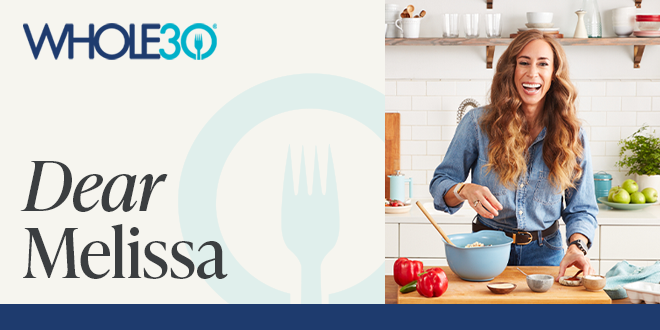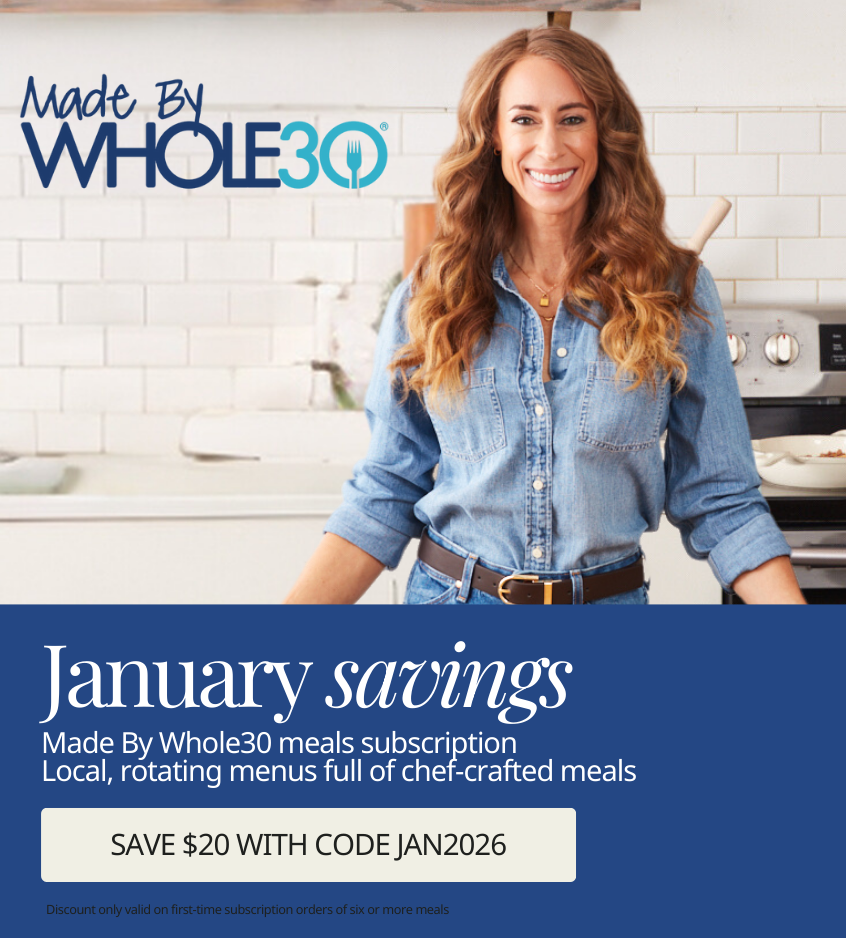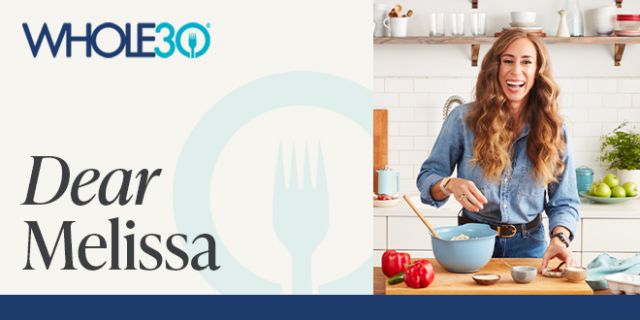In Part 1 of Find your Food Freedom “why”, I said that if you really want Food Freedom success, you need to work your Food Freedom plan as hard as you worked your Whole30. To do that, make your Food Freedom plan starts with a solid “why.”
In part two of this two-part series, I’ll share another exercise in finding and applying your “why” to help you navigate stress, uncertainty, doubt, and peer pressure in your Food Freedom journey.
Exercise 2
We all do the Whole30 for different reasons, but I guarantee all of us had something in our life that wasn’t going so well, and we thought the Whole30 would help. And it did! Now we have a new measure of how good we can really feel.
Let’s use that to solidify your “why” from a different angle. This exercise is a trick I stole from Glennon Doyle, and it uses your brain’s own tricks to your advantage.
Spend some time reflecting on your Whole30, and what motivated you to begin the program in the first place. Maybe it’s “I struggled with late-night eating and relentless cravings.” Maybe it’s “I thought about food and my body weight all the time, and I never felt at peace.” Or “I was sleeping like crap, I had no energy, and because of that, I felt unmotivated to spend time with my kids or exercise.” Journal the tough stuff—the hardest days before your Whole30, the incident (or three) that made you realize you needed a change, the moment you said “enough is enough.” Get into how it made you feel, the way it impacted your life, and the emotions it brings up now.
PRO TIP
Be brutally honest; no one will read this but you. Don’t stick this up around the house—keep it in a safe place for a rainy day. This is your back-up, when your positively-motivated “why” just doesn’t seem to land.
This exercise works with the logical fallacies our brains tend to follow. Specifically, the one that tells us because we took one step in the work (AKA, finished the Whole30), everything is all of a sudden magically all better. (You know what I’m talking about.) In addition, the brain tends to rewrite history, remembering the fun parts and blocking out the challenges, especially when it comes to rewarding behaviors like sugar or wine consumption.
How to use your WHY
I predict there will come a day in your Food Freedom (probably earlier than you expect) when you’ll think, “I feel better, and thinking about ‘is it worth it, do I want it?’ is kind of hard. Do I really need to stay so aware in my Food Freedom? I didn’t feel THAT bad before, and I feel even better now, so why do I have to keep thinking about it?”
You know this as the thought process that precedes a fast slide back into old habits and the corresponding effects those habits have on your energy, sleep, cravings, self-confidence, motivation, and self-talk.
When you recognize these thoughts, immediately return to your positive post-it “whys.” Think about the benefits you still have to gain, how much better you will feel physically and emotionally if you keep working your Food Freedom plan, and remind yourself that it WILL get easier with practice, just like your Whole30 did. Then pause, and decide if that is enough to keep you on track.
If it’s not—if that just isn’t persuasive enough in this moment, and you’re still tempted to say “screw this Food Freedom stuff”—break open your Food Freedom journal and dive back into the past. Remind yourself where you were just a few months ago. Revisit that unhappy place and those stressful feelings—the day you knew you had to make a change. Don’t allow your brain to whitewash how hard things felt or how unhappy you were with these aspects of your life before your Whole30.
Now, return to your original list of whys. What a positive, rosy picture they paint! This is how things could be; a stark contrast to how things definitely WERE.
PRO TIP
Need another bump? Ask friends and family about the differences they’ve seen in you pre-Whole30, during your Whole30, and now. Let yourself see you through their eyes, because there’s a good chance you’re not giving yourself nearly enough credit here, you’re doing way better than you think in your Food Freedom plan, and what you’re feeling is really just a little hiccup, not an insurmountable obstacle.
NOW you’re ready to recommit to your Food Freedom plan, keep putting in the effort, and reminding yourself that you are worthy of this work. Nice job!
Work your Food Freedom plan
The Whole30 is an incredible start to your Food Freedom journey, but it’s just a start. The Food Freedom plan works if you work it, and the tips that helped you in your Whole30 are just as applicable here. The two exercises I’ve shared with you in this series are simple but wildly effective in helping you stick to your Food Freedom plan. I hope you’ll find they help you step into your Food Freedom feeling more capable, more confident, and more prepared than ever.
XO Melissa














